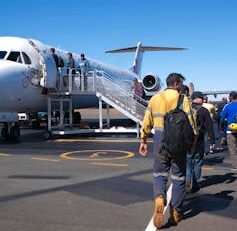
Keir Starmer to abolish NHS England – the pros and cons
The UK government has announced the abolition of NHS England, phased over two years. In practice, this will involve merging some functions and staff from NHS England into the Department for Health and Social Care (DHSC). As part of the change, the government has stated that it expects to reduce duplication and save hundreds of millions of pounds.
NHS England was established under the Health and Social Care Act of 2012 (the Lansley reforms) and is responsible for commissioning care and overseeing the day-to-day running of the NHS. This involves negotiating budgets for local care provision with bodies like integrated care boards and hospitals; performance management such as monitoring waiting times and quality measures; and implementing national initiatives across NHS organisations.
NHS England was established to provide operational autonomy, shielding the health service from daily political interference. It is an “arm’s-length body”, meaning it operates independently from the government but remains accountable to it. The DHSC sets strategic goals and oversees NHS England activities.
In practice, NHS England and DHSC have distinct roles, although they overlap in some areas. DHSC staff typically have broader policy expertise – for example, many have worked in other areas of the civil service, whereas NHS England staff often have more detailed knowledge of how the NHS works on the ground.
Risks
The loss of expertise within NHS England is probably the largest risk of the abolition. Alongside very experienced NHS managers and analysts, NHS England employs senior doctors and other health care workers who contribute valuable practical knowledge from the NHS frontline into policy roles.
A major risk of this move is the potential loss of this clinical expertise and operational insight into policymaking. Lord Darzi’s report on the NHS specifically cited the loss in management talent that occurred as a result of the 2012 reforms, and cautioned against further reorganisation that might repeat that disruption.
Another risk is that bringing NHS England functions directly under ministerial control risks increased politicisation of day-to-day NHS management.
The government will argue that other policy areas like defence, education and policing do not have such a large arm’s-length body between the department and the frontline. However, health and social care is a uniquely large (11% of GDP) and highly political organisation, with a fast-growing budget and faster-growing challenges.
Keir Starmer announcing that he will abolish NHS England.
PA Images / Alamy Stock Photo
NHS policy is already highly politicised, but abolishing NHS England risks the DHSC and the ministers being on the hook for every operational decision. This could lead to operational decisions being made to appease public opinion rather than promoting public health.
The government faces significant practical challenges in merging two organisations with different cultures, working practices and pay structures. Currently, NHS England (about 16,000 staff) is much larger than DHSC (about 3,000 staff). Many NHS England roles will have to move into the much smaller DHSC.
The transition itself will require investment, so the promised savings are unlikely to be achieved in the short term.
Opportunities
The main opportunity of the abolition is the removal of duplication between DHSC and NHS England.
Currently, both organisations maintain separate policy teams covering similar areas – for example, elective surgery waiting times or cancer care. And sometimes, it is unclear how well they work together or why both are necessary.
By consolidating within the DHSC, there is an opportunity to strengthen policy analysis. With one strong policy team in the DHSC, policy advice to ministers (DHSC) and policy implementation on the ground (previously NHS England) could be better coordinated and aligned with the government’s objectives.
Lord Darzi’s report on the NHS highlighted the growth of regulatory roles within NHS England, questioning whether too much accountability could be counterproductive.
The abolition of NHS England is also an opportunity to streamline regulation while strengthening local management roles and valuable policy analysis.
Another opportunity from the abolition of the organisation would be the strengthening of local NHS bodies like integrated care boards. These local bodies, designed to tailor healthcare to local area needs, may sometimes have been stymied by excessive central control.
The health secretary, Wes Streeting, has already expressed his desire to see more devolution of power and responsibility within the NHS. This process provides the opportunity to enact that promise.
What will happen next?
The abolition of NHS England and the transfer of some responsibilities back to the DHSC will take time and incur significant costs and disruption. Any benefits are likely to emerge only in the long term.
Before the introduction of NHS England, there were larger regional organisations (strategic health authorities) that were responsible for implementing policy at a regional level. Perhaps the re-emergence of similar regional bodies could smooth the transition from a central NHS England to a more decentralised health service. Läs mer…







